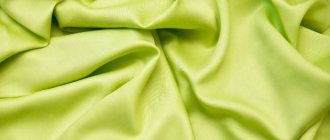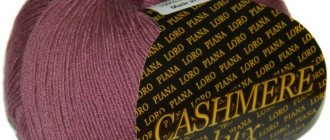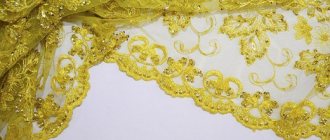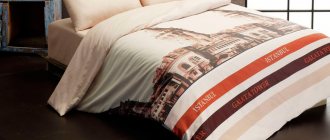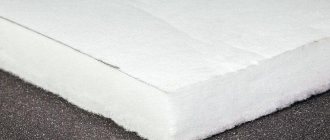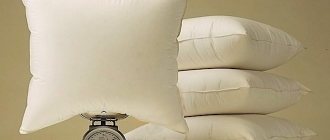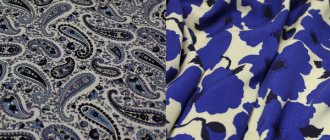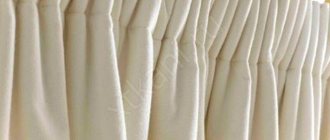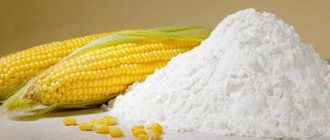History of flax
How high the technical processing of flax was among the ancient Egyptians is proven by the linen fabrics of that time, so thin that it was difficult to count the number of threads in them. Flax is mentioned in almost every book of the Old Testament. Even in the remains of pile buildings on Swiss lakes, pieces of linen fabric were found. It is known about the Western Slavs that they paid their rent in flax and yarn.
In Russia, flax has always been the most beloved plant and has been bred since time immemorial. “A wife is the strands of a shirt, and a husband is a weave,” says an old Russian proverb.
The production of fabrics from flax fiber was known in Russia already in the 9th century. Climatic conditions in most of Russia are favorable for growing flax, but its cultivation, despite its prevalence, is not at all easy. Peter the Great, well understanding the importance of flax for the industry of his country, established state-owned linen factories, encouraged private enterprises of this kind and even intended to ban the import of foreign linens. He issued a decree on the expansion of the flax and hemp business in all provinces, “where it is unusual to establish flax and hemp in order to train the peasants.”
In pre-revolutionary Russia, half of the flax crops were concentrated in four provinces lying north of Moscow: Vyatka, Tver, Smolensk and Pskov. The area occupied by fiber flax crops accounted for up to 15% of the total sown area. Before the revolution, Russia accounted for about 80% of the collection of this fiber in Europe, and during the Soviet era - up to 60%.
Where do flax come from?
I suggest you look at the diagram and remember that flax is a natural fiber of plant origin.
Flax fibers belong to the so-called bast fibers, which are obtained from plant stems. That is, the fibrous tissue lies between the outer tissues and the wood of the stem. They have high strength, flexibility, and absorb moisture well. To obtain flax fiber, one type of flax is used - fiber flax - with blue inflorescences.
By the way, I remembered that in Soviet times there was a song called “Blue Linen”, I even have the words written down somewhere, I remember the tune.
I was thinking about something... I’ll have to tell you about it sometime.
But let's continue about flax.
Now, of course, they harvest it with combines, but before it was first pulled out of the ground along with its roots, dried in stacks, combed and threshed.
And then they spread it out on the grass again so that it would get wet from the dew. Interestingly, dew activates microorganisms living in flax stems. Microorganisms destroy the sticky substances inside the plant, and then the fiber is more easily separated from the woody part of the stem.
The soaking of flax with dew could last for several weeks, depending on the weather. From time to time, the flax stems were carefully turned over so that the process of fiber formation proceeded evenly.
Then the resulting fiber (trustu) was dried and torn, separated from the woody part of the stem.
The tattered flax was combed and a slightly twisted thin ribbon was pulled out of it - a roving. It was already possible to spin linen yarn from it. And then weave the fabric and everything is ready.
There, I remembered again! I have this towel in my closet! I got it from my grandmother, they wove cloth themselves in the village, now I’ll go take a photo to show you.
Here. I don’t use it on the farm – it’s a shame. Because it's memory.
Now, of course, no one probably does that. Industrial production is well established.
A reminder for those who missed the previous lesson and never learned how cotton is made: read “Fabrics Come from Nature: Cotton.”
The technological process of cleaning and preparing linen fabrics at a weaving factory is almost the same as in cotton production. Only mercerization and napping operations are excluded. In some cases, after bleaching, linen fabrics immediately go to final finishing, bypassing dyeing and printing.
Flax culture
In the world, common flax (Linium usitatissimum), which in Russia was popularly called “flax-breadwinner,” is cultivated to obtain fiber. This is an annual herbaceous plant with straight stems that grows in areas with a wide variety of climatic and soil conditions.
Flax is a crop of a temperate climate zone with high air humidity. The main cropping areas within the former USSR are the north of the Central and south of the North-West economic regions of Russia, Belarus, Polesie of Ukraine and the Baltic states. Flax grows in the Volga-Vyatka region, as well as in small quantities in the forest zone of the Urals and Western Siberia.
While remaining a very stable species, flax is, at the same time, a fairly flexible crop, suitable for use in various directions. The same species is grown for both fiber and seeds for the production of flaxseed oil.
In the first case, selection is carried out to obtain a straight, tall, non-branching stem. This flax is called long-lasting or rostun. Only fiber flax is used to produce ropes. In terms of the area under fiber flax, Russia ranks first in the world - more than half of the sown area. Fiber flax is sown in a number of Western European countries (Ireland, Belgium, the Netherlands, Denmark, France and Germany), Canada, Australia, New Zealand, Japan, Egypt, and Ukraine.
In the second case, the plant must branch, even if it is of low growth. This flax is called curly or stag. Curly flax is cultivated for its seeds, from which linseed oil is obtained. Therefore, curly flax is also called oilseed flax.
Mezheumok flax occupies an intermediate position in its morphological characteristics (thickness, length, branching, number of bolls) and is grown to produce oil seeds, as well as for bilateral use. Fiber from mezheumka flax is used as textile raw material.
Flax blooms with blue flowers with a five-petal corolla. The seed capsule is almost round and contains up to ten seeds. The growing season of fiber flax is 90 days, the yield can reach 15 centners per hectare.
The most common variety in Russia is the “Svetoch” variety; it covers about a third of all crops; however, the T-10 variety is more suitable for the production of ropes and ropes, characterized by a high fiber content in the trust, but low spinning properties.
Lecture on the discipline Fundamentals of Materials Science “Natural Fibers”
DISCIPLINE OP.03 FUNDAMENTALS OF MATERIALS SCIENCE.
SECTION 1. FIBROUS MATERIALS. TOPIC 1.1. FIBER CLASSIFICATION.
Topic of the lesson: Natural fibers of plant and animal origin.
Natural fibers are fibers that exist in nature in a finished form; they are formed without direct human intervention.
Natural fibers can be of plant, animal, or mineral origin.
Natural fibers of plant origin
The main substance that makes up plant fibers is cellulose. This solid, poorly soluble substance consists of C6H10O5 units. In addition to cellulose, plant fibers contain waxes, fats, proteins, dyes, etc.
Plant fibers can be located:
- on the surface of the seeds - cotton fiber
- on the walls of the fruit - kapok
- in the fruit shell - coir
- inside the stem – flax, hemp, jute, kenaf
- in leaves - abaca, sisal, henequin, phormium, yucca
The most common plant fibers are cotton and linen.
Natural fibers of animal origin
: wool, natural silk.
Wool is the hair of mammals that has spinning properties. Wool fibers are made up of natural protein molecules called keratin.
Silk is a product of the secretion of special silk-secreting glands of some insects (mulberry silkworm, oak silkworm). Natural silk threads consist of polymers of the natural proteins fibroin and sericin.
Natural fiber of mineral origin:
asbestos.
In terms of its chemical composition, asbestos is aqueous silicates of magnesium, iron, and calcium and occurs in rocks in the form of veins and streaks.
Fibers of plant origin.
Plant fibers include cotton and bast.
Cotton is one of the oldest spinning fibers. The first cotton products were found in Mexico, and they were made back in the 6th century. BC. Archaeologists also found cotton seeds in Pakistan and India, which turned out to be more than 9 thousand years old. The spread of cotton to the West was facilitated by the conquests of Alexander the Great. In Rus', cotton became known in the middle of the 15th century thanks to trade relations with Bukhara, Samarkand and other cities of Central Asia. In the second half of the 17th century, under Tsar Alexei Mikhailovich, an attempt was made to grow cotton near Moscow, but it was a complete failure.
At the end of the 18th century. cotton (calico) production originates in the central regions of Russia - Ivanovo, Tver, Vladimir and Moscow regions. As a result of fierce competition with native Russian flax, cotton fabrics took a leading position in the production of fabrics from natural fibers.
Cotton
- These are the fibers that cover the seeds of the cotton plant. The main substance (94-96%) that cotton fiber consists of is cellulose. Associated substances (4-6%) include water, pectin (gluing), fatty wax, ash substances, etc.
Under a microscope, cotton fiber of normal maturity looks like a flat ribbon with a corkscrew crimp and a channel filled with air inside.
The length and thickness of the fibers depend on the type of cotton. Cotton fiber is very thin, its number is 7000–5000. Depending on the length of the fibers, there are short-staple cotton up to 27 mm long, medium-staple cotton 27–35 mm long and long-staple cotton 35–50 mm long.
In the group of short-staple cotton, down (fibers up to 20 mm long) are distinguished, which is used to produce non-woven canvases and as raw materials for the production of artificial fibers. Short-staple cotton is processed into thick, fluffy yarn to make flannel, flannel, muslin, and other fabrics. Medium-fiber cotton is used to produce medium-thick yarn for making calico, carded satin and other fabrics. Fine-fiber cotton is used to produce the finest and smoothest yarn for the production of high-quality thin cotton fabrics - cambric, voile, combed satin, etc.
Cotton fiber has many positive properties. First of all, it has high hygroscopicity (8~12%), so cotton fabrics and products made from them have good hygienic properties.
Cotton has the ability to quickly absorb moisture and quickly evaporate it, i.e. it dries quickly. When immersed in water, the fibers swell and their strength increases by 10-20%. Cotton is resistant to alkalis, but is destroyed even by dilute acids.
The ability of cotton to swell in alkalis and at the same time increase strength, dyeability and acquire silkiness and shine is based on a special finishing operation - mercerization. The fibers are quite strong. Cotton has a relatively high heat resistance - fiber destruction does not occur at temperatures up to 130 ° C. Cotton fiber is more resistant to light than viscose and natural silk, but in terms of light resistance it is inferior to bast and wool fibers.
When exposed to light weather, the process of cellulose oxidation by atmospheric oxygen is activated, which leads to a decrease in mechanical properties (strength, elongation), an increase in the rigidity and fragility of the fibers. As a result of exposure to sunlight for 940 hours, the strength of cotton is reduced by 50%.
Due to the presence of a channel open on one side and relatively thin walls, cotton has adsorption properties, which contributes to good dyeing [20].
When heated to a temperature of 150 °C, cotton fibers practically do not change their properties; at temperatures above 150 °C, the process of slow and then rapid destruction of fibers begins, accompanied by the decomposition of cellulose and, at a temperature of 250 °C, its charring.
Cotton is a flammable fiber; it ignites easily in a flame and continues to burn quickly after being removed from it, producing easily scattered ash. The cotton fibers burn with a yellow flame and the smell of burnt paper is felt.
The negative properties of cotton fiber are high creasing (due to low elasticity), high shrinkage, and low resistance to acids. The disadvantages of the fiber include low elasticity (εe = 6–8%). The proportion of plastic deformation in total elongation is 50%; due to the small amount of elastic deformation, cotton fiber fabrics are easily wrinkled, and knitted products are stretched.
The abrasion resistance of cotton is relatively low, as a result of which products made from it have low wearability.
Cotton fiber is resistant to alkalis, reducing agents, and unstable to acids and oxidizing agents.
The natural color of cotton is white or cream, in some cases it can be beige or greenish. Cotton fibers have no shine (matte), but after mercerization they acquire significant shine (silky). The fibers are soft and warm to the touch [15].
Application area of cotton fibers
Cotton is used to produce products for various purposes - household (linen, shirting, dress and suit fabrics, lace, tulle, knitwear, etc.) and technical (artificial leather, tarpaulin, ropes, etc.)
Linen.
Fibers that are obtained from the stems, leaves or shells of plant fruits are called bast. Hemp stems produce strong coarse fibers - hemp, which is used for container fabrics and rope products. Coarse industrial fibers (jute, kenaf, ramie) are obtained from the stems of plants of the same name. Of all the bast fibers, flax is the most widely used.
Flax fibers are obtained from the bast part of the stem. Flax is an annual herbaceous plant.
Flax was already known in the Stone Age. Its remains were discovered during excavations of ancient pile structures in the lake regions of Switzerland.
Flax was well known to our Slavic ancestors since ancient times. The thin linen fabrics produced in Rus' were called Russian silk. In the X–XIII centuries. The border for flax cultivation reached 60° northern latitude: this is significantly north of Pskov, Novgorod and even Vologda. Len received universal recognition. In the 13th century. They became acquainted with Russian linen fabrics abroad, and from that time flax, hemp and linens made from them became the subject of Russian export.
There are 330 species in the flax family. In Russia, two types of flax are mainly cultivated: long-lasting flax and curly flax; Intermediate flax and creeping flax are grown in smaller quantities. The main flax growing areas are the Vologda, Yaroslavl, Arkhangelsk, Kirov, Ivanovo regions, as well as the northern regions of Belarus and Ukraine. Curly flax is intended mainly for the production of linseed oil seeds
Preparation, structure, chemical composition.
To obtain flax fiber, a special type of flax is grown - fiber flax, which is an annual herbaceous plant with a straight, unbranched stem 80–90 cm high and 1–2 mm in diameter.
A characteristic feature of bast fibers, unlike others, is that they are bundles of fibers connected by pectin substances. During prolonged boiling in soap and soda solutions, the pectin substances are washed out and the flax is divided into individual fibers.
An individual flax fiber represents one plant cell. Under a microscope, the fiber in longitudinal form is a cylinder with thick walls. The cross section of the fiber is a polygon with 5-6 edges.
The surface of the fiber is more even and smooth, as a result of which linen fabrics are less likely to get dirty than cotton fabrics and are easier to wash. These properties of flax are especially valuable for linen fabrics.
The fiber contains 80% cellulose and 20% impurities - waxy, fatty, coloring, mineral and lignin (5%). Lignin is a product of cell lignification, which gives flax increased rigidity. The lignin content in flax fiber makes it resistant to light, weather, and microorganisms.
The strength of elementary fibers is 3-5 times higher than the strength of cotton, and the elongation is the same number of times less, so linen interlining fabrics retain the shape of products better than cotton ones. The fibers shine because they have a smooth surface. The physical and chemical properties of flax and cotton are quite similar. Flax fiber is unique in that, with its high hygroscopicity (12%), it absorbs and releases moisture faster than other textile fibers. A special feature of flax is its high thermal conductivity, so the fibers are always cool to the touch. Thermal destruction of the fiber does not occur up to a temperature of 160 °C. The chemical properties of flax fiber are similar to cotton, that is, it is resistant to alkalis, but not resistant to acids. Due to the fact that linen fabrics have their natural, beautiful, rather silky shine, they are not subjected to mercerization.
A negative property of flax fiber is its strong creasing due to low elasticity. Flax fibers are bleached and dyed, as they have a more intense natural color and thick walls.
The physicochemical properties of flax and cotton are quite similar. For example, the effect on flax fiber of water, steam, alkalis, acids, oxidizing agents and light weather is approximately the same as on cotton fiber. But there are also some features of the properties of flax fibers that appear under the indicated influences.
The hygroscopicity of flax (W = 11%) is higher than that of cotton. Linen quickly absorbs and releases moisture. A special feature of flax is its high thermal conductivity, so the fibers are always cold to the touch. This property is also related to the fact that when heated, dry flax fibers can withstand higher temperatures than cotton, since they have greater hygroscopicity. Along with this, flax fibers have high breathability and healing properties. Flax fibers are the strongest of natural fibers (Lp = 80 µm). They are stronger than wool and cotton fibers and are also resistant to rotting. In the wet state, the strength of elementary fibers increases, and the strength of technical fibers decreases, since the pectin substances soften and the bond between individual fiber bundles is weakened.
Elementary flax fiber has the highest relative breaking force and the lowest elongation at break. This is due to the fact that, compared to cotton, linen has a more dense and oriented structure. In addition, flax fibers are low elastic (ε = 2–3%) [20]. Therefore, products made from linen fabrics are strongly wrinkled, and clothes are deformed. Linen products are highly wear-resistant. The light resistance of flax is also slightly higher: a 50% loss of strength occurs after insolation for 990 hours.
Linen has a characteristic shine, because... its fibers have a smooth surface and do not lose their original appearance after repeated washing. The disadvantage is that due to the large amount of pectin substances and pigments, thick walls and a narrow closed channel, preparation for dyeing and printing is difficult.
When boiled in SMS solutions, the fibers become lighter and softer, as pectin substances are washed out. Due to significant unevenness, as well as the thickness and stiffness of technical flax fiber and yarn made from it, the fabrics are not uniform enough and have little drape
Acids, alkalis, oxidizing agents and reducing agents act on flax in the same way as on cotton. Organic solvents used in dry cleaning have no effect on flax. Flax burns just like cotton.
The cylindrical structure of the fiber makes it possible to produce compact, smooth, non-fluffy yarn. Linen fiber is used to produce fabrics for household purposes - dress, suit, curtains, table linen and bed linen; for technical purposes – canvas, tarpaulin, container fabrics.
Animal fibers.
Natural fibers of animal origin (wool and silk) consist of proteins - natural high-molecular compounds, which include keratin (in wool), fibroin and sericin (in silk). The main types of protein fibers are wool and silk.
Wool fiber.
From the history of wool fiber. Wool has been known to people for a long time. In the 9th–10th millennium BC. people were already raising sheep in what is now Europe and Asia and making fabrics from their wool. Unlike other fibers that have a history of production tied to a specific country or place, the history of wool belongs to the entire world. Sheep farming was widespread in Ancient Egypt, where loose white cloaks were made from wool fabric and worn over linen clothing. In India, along with cotton clothing, wool products were widespread, and in China, wool weaving was developed at a high level already in the 3rd century. BC, and some fabrics were stronger than modern cloth materials. In addition to sheep, wool from other animals was also used. So, in America these were rabbits, llamas, bison, opossums, in Asia - camels and goats.
The main sheep-breeding countries include Australia, New Zealand, Argentina, England, China, the former Soviet republics: Kazakhstan, Kyrgyzstan, Uzbekistan, Ukraine, etc. In Russia, the main sheep-breeding areas are: the North Caucasus, Western Siberia, and the Volga region. Currently, most of the raw materials for the Russian wool processing industry are imported from Central Asian countries and other leading sheep-breeding countries. A special place in the import of raw materials is given to fine wool, which makes it possible to obtain the thinnest and lightest materials.
The textile industry uses wool from sheep, camels, goats, cows, and rabbit fluff. More than 8,000 varieties of wool are produced, obtained at different shearing times.
Preparation, structure and chemical composition of wool fiber
Wool fiber is made from the wool of various animals, i.e. the hair of animals: sheep, goats, camels, etc. Sheep wool is most widely used in the production of textile materials, along with this the wool of goats, camels, rabbit fluff, dog hair and etc. Wool fibers are horn-like formations of the skin (hair) of animals. In addition to keratin (90%), the chemical composition of wool includes a certain amount of mineral and fatty wax substances, pigment and intercellular substance (a modification of keratin).
Unlike cellulose fibers, wool has a complex morphological structure. Wool fiber consists of three layers: scaly, cortical and heart. The scaly layer (cuticle) consists of flat keratinized cells superimposed on each other in a tile-like manner, which protect the hair from destruction and can take the form of rings, half-rings, plates. The shine of the fibers and their ability to felt depends on the size, shape and nature of the arrangement of the scales. The thickness of the scale is approximately 1 micron. Each scale is covered with a thin layer consisting of chitin, wax and other substances and is highly resistant to acids, chlorine and other reagents.
Down is thin crimped fibers consisting of two layers: scaly and cortical. Down forms the entire hair coat of fine-wool sheep and the coat of coarse-wool sheep adjacent to the skin. The fluff scales are ring-shaped; they cover the entire circumference of the fiber, stacking one on top of the other, creating a rough surface. The awn is coarser, thicker than down and has almost no crimp.
The cortical layer, or cortex, is the main layer of the fiber; it consists of spindle-shaped cells 80–90 µm long with a diameter of 4–5 µm. Spindle cells are formed from keratin fibrils and are connected to each other by an intercellular substance that is less resistant to chemical influences than keratin. Therefore, fiber destruction always begins with disintegration into spindle-shaped cells.
In the center of the fiber there is a core layer, consisting of large cells with a keratin-like substance, which are located perpendicular to the cells of the cortex and are filled with air bubbles.
According to the nature of their structure, wool fibers are divided into four types: fluff, transitional hair, awn, dead hair.
It consists of three layers: scaly from lamellar scales, cortical and solid core. The scales of the awn are not ring-shaped and fit most tightly to the cortex, causing a strong shine and less rolliness. The core layer occupies from 1/3 to 2/3 of the fiber thickness.
Transitional hair occupies an intermediate position between down and awn. Transitional hair forms 3 layers: scaly, cortical, intermittent core.
Dead hair is a coarse, straight, stiff fiber that does not dye well and breaks easily during processing. Dead hair consists of three layers: scaly, thin cortical and wide core, occupying almost the entire diameter of the fiber
Wool is cut from sheep using special scissors or clippers. The wool removed from sheep is called fleece. The wool of other animals is used in a mixture with sheep wool to make fabric and knitted fabrics. Camel wool consists of downy fibers, the length of which reaches 60–70 mm, and the average fineness is 20.6 microns. The wool of the Angora goat is called mohair (moger, tiftik). This is a thin, long (150–200 mm), slightly crimped and shiny fiber. Llama wool from the camelid family - alpaca - is a soft, thin, durable, and shiny fiber. The wool of Kashmir goats (cashmere), obtained by combing, is a very thin and long (up to 450 mm) fiber. The wool of the Angora rabbit is used to produce a soft, thin, water-resistant and moth-resistant fiber called angora.
Wool is cut from sheep using special scissors or clippers. The wool removed from sheep is called fleece. Such wool is heavily soiled and is called dirty. In addition, it is not uniform in quality.
To remove contaminants and select batches of fiber of uniform quality, wool removed from sheep is subjected to primary processing, which consists of:
• sorting wool by quality;
• scuffing for the purpose of loosening and removing clogging impurities;
• washing to remove grease, sweat and dirt (washing is done with a weak solution of sulfuric acid);
• drying to a moisture content of 15–17%;
• packaging.
Very contaminated fiber is treated with a 5% sulfuric acid solution, followed by heat treatment at a temperature of 110°C. This operation is called carbonization. The acid solution destroys plant debris, which is based on cellulose. In this case, the wool is not damaged. The hydrolysis products of cellulose impurities are removed from the wool material under subsequent mechanical action.
Properties and scope of application of wool fiber.
Wool is a fairly strong fiber. The strength of wool fibers largely depends on their thickness and structure. The relative breaking load and wear resistance of fine wool is higher than that of coarse wool, since coarse fibers (awn, dead hair) have a core layer filled with air. The fiber is crimped and has high elasticity, so wool products are low-crease and highly elastic (ε = 40–60%). The crimp and the presence of a scaly layer on the surface contribute to the adhesion of the fibers and cause felting. During the felling process, the fibers are able to come closer together, move and, when entangled, intertwine, forming a felt-like covering. As a result of rolling, the mass of fibers is compacted, their appearance changes, thermal conductivity decreases and softness increases, which is used in the manufacture of felt, cloth, felt, blankets.
The fiber is hygienic, has high hygroscopicity (W = 15–17%) and at the same time appears dry. Wool slowly absorbs moisture and slowly releases it. When exposed to heat and moisture, the fibers elongate. The ability of wool to change the degree of elongation and shrinkage during WTO (moist heat treatment) is used to carry out operations such as ironing, pulling, and decating. The fiber is light, has low specific gravity and low thermal conductivity, and has high heat-shielding properties. Wool fiber is not resistant to abrasion and tends to retain and retain odors for a long time. The strength loss of wool fiber when wet is about 30%.
Wool has amphoteric properties, i.e. can interact with both acids and alkalis. When boiled, wool dissolves in a 2% solution of sodium hydroxide. When exposed to dilute acids (up to 10%), the strength of wool increases. Under the influence of concentrated nitric acid, the wool turns yellow, and under the influence of concentrated sulfuric acid it becomes charred.
In terms of light resistance, wool is superior to all natural fibers: a 50% loss of strength occurs after insolation for 1120 hours [14]. The disadvantage of wool is its low heat resistance - at temperatures of 110–130°C, the fibers become brittle, stiff, and their strength decreases. Intense deterioration of properties and destruction of fibers occur at temperatures above 170°C.
The shine of wool is determined by the shape and size of the scales covering it: large flat scales give the wool maximum shine; small, strongly lagging scales make it matte.
When burning, the wool sinteres in the flame; when the fibers are removed from the flame, their burning stops, a baked black ball is formed, and the smell of a burnt feather is formed.
The quality of wool fiber depends on its length and thickness. Based on these indicators, sheep wool is divided into the following types of fibers: fine, semi-fine, semi-coarse and coarse. Fine wool, consisting of downy fibers, is used to make high-quality worsted wool fabrics. Semi-fine wool, consisting of downy fibers and transitional hair, is used to produce worsted suiting and coat fabrics. Semi-coarse wool, consisting of awn and transitional hair, is used to produce semi-coarse cloth and costume fabrics. Coarse wool contains all types of fibers and is used to make coarse cloth fabrics.
Goat down is mainly used for making scarves, knitwear and some dress, suit, and coat fabrics. Camel wool is used to make blankets and national products.
Silk is a thin continuous thread
, released by silkworm caterpillars: mulberry and oak, when curling a cocoon before pupation. The art of producing silk was born in China around 3 thousand years BC. For many years, the Chinese kept the secret of obtaining silk, and the secret of its manufacture remained unsolved for a very long time. Koreans became acquainted with sericulture only in the 2nd century. AD, and from them the Japanese, Indians and other neighboring peoples learned about silk. However, despite the spread of sericulture around the world, China for a long time still had an undivided monopoly on the silk trade, and numerous Chinese caravans roamed Asia Minor and Central Asia, supplying the rulers of many countries with beautiful fabrics. The first Europeans who became acquainted with sericulture products were the soldiers of Alexander the Great. However, for a long time, Europeans had absolutely no idea about silk production. Many scientists tried to discover the mystery of silk: some came close to solving it, others were deeply mistaken. The Romans began to wear silk clothes since the return of the Roman consul Pompey from China: in 75 BC. At first these were fabrics made from bombicina - threads obtained from a wild silk worm. They were inferior in quality to threads from silkworm cocoons and were gradually replaced by natural silks delivered along the Great Silk Road (in the 1st century AD). The Romans learned how to obtain the finest silk from dense Chinese fabrics by dividing them into thin threads and re-making fabrics from them. The price of silk fabric in those days was equal to the weight of gold. The secret of silk production was revealed only in 532 AD, after the collapse of the Great Chinese Empire. The art of silkworm breeding was adopted by the Arabs, and from them, along with Islam, it spread to North Africa, Sicily, Spain and Portugal.
Properties of natural silk.
The thickness of the cocoon thread is uneven throughout its entire length and is expressed by linear density, which ranges from 0.5 to 0.18 tex. One mulberry has an average diameter of 16 microns, and a cocoon thread has a diameter of 32 microns. The length of the cocoon thread reaches 1500 m; the upper and inner layers of the cocoon do not unwind, so the average length of the unwound thread is 600–900 m.
Natural silk is a valuable fiber, durable (Lр = 38 rkm), thin, hygienic, hygroscopic (W = 13–15%), breathable, has a low specific gravity, and good tackiness. Paints well. The proportion of elastic deformation in total elongation is 60%, so fabrics made from natural silk crumple little.
In terms of chemical resistance, natural silk is superior to wool. Dilute acids and alkalis, organic solvents used in dry cleaning of clothes do not affect natural silk. Natural silk dissolves only in concentrated alkalis when boiled. The strength of natural silk when wet is reduced by 5–15%. With prolonged exposure to water and repeated washing, a whitish coating appears on the dyed fibers, which spoils the appearance of the products. Some revitalization of color and increased shine can be achieved by rinsing in a dilute solution of acetic acid.
In order to obtain fabrics with good drape ability at a lower cost of raw materials, natural silk is made heavier (up to 40%). Methods of weighting: treatment with metal salts, impregnation with vegetable tanning agents, preservation of sericin, treatment with a suspension of betanite clay, etc. Under the influence of direct sunlight, silk is destroyed faster than all other natural fibers (cotton, wool).
The color of boiled cocoon threads is slightly creamy. The burning of natural silk is similar to the burning of wool. In addition to the silkworm, there is an oak silkworm, which feeds on oak leaves. Oak silkworm silk has coarser fibers than mulberry silk. Oak silkworm cocoons are almost impossible to unwind and are therefore used to produce yarn. In spinning, cocoon threads are mainly used, uniform, without breaking.
Natural silk is used to produce a wide range of dress fabrics (satin, chiffon, georgette, taffeta, crepe-satin), threads, cords, and high-strength technical fabrics for the defense industry. In addition, natural silk is used to produce silk sewing threads. Natural silk waste and rejected cocoons are used to produce silk yarn.
Wonderful properties
Linen is considered a natural antiseptic. It has been proven that pathogenic microflora and fungal spores do not survive on it. Linen fabrics are hygienic (they absorb moisture well and quickly evaporate), breathable, and give a feeling of coolness in hot weather.
They have high tensile strength and abrasion, do not stretch, are structurally expressive, do not lint, and are resistant to repeated washing and ironing. But these fabrics wrinkle and shrink a lot. Therefore, before cutting, they should be wetted, allowed to dry, and then moistened and ironed again.
In general, linen is always ironed with moisture and at the highest temperature.
When wet, linen fabric, like cotton fabric, has increased strength.
Linen fabrics are stiffer, shinier and cooler to the touch than cotton fabrics. Linen creases more and forms larger raised creases. When a linen thread breaks, an elongated tassel of fibers of different lengths and widths is formed at the end, and a fluffy tassel of short fibers of equal thickness is formed at the end of a cotton thread.
